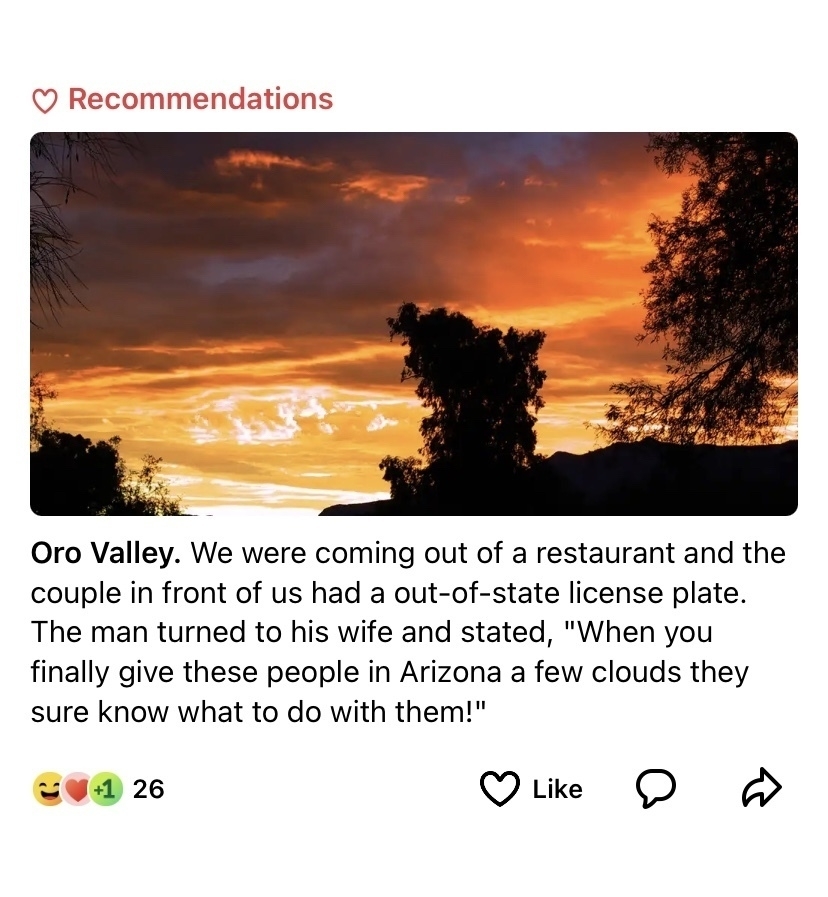We’re big fans of BRBC Family Camp at Covenant. Check out the new website I made for this year. Registration is now open!
Caleb Miller on expressing uncertainty in the pulpit:
A consistent practice of avoidance, or refusal to admit concerns publicly, especially from the pulpit, gives the impression in the long run that doubt and uncertainty are things to be shamed and ignored, perhaps even feared, rather than patiently and pastorally addressed out in the open. If doubt itself becomes something to be feared, it becomes nearly impossible to tackle a problem authentically. On the other hand, a consistent practice of acknowledging any and all uncertainties, rehearsing each and every last unknown, especially from the pulpit, can lead to its own crippling disaster. If doubt is something idealized and venerated, a near-weekly occurrence and constant refrain demonstrating “authenticity,” telling our congregation so regularly that we actually nurse private doubts about the reliability of the biblical testimony, they will invariably begin to follow our lead. They will begin to lose confidence in the Scriptures, in us, or both.
Good observations. The core problem is that both of these approaches undermine the gospel. I look forward to reading more of his thoughts in forthcoming articles.
Good idea: Intentionally spiraling out - Austin Kleon
Love this video of a couple #tucson burritos head home.
I’m sharing with you the best advice I’ve received on how to revise your writing. Check it out.
This document started as my notes from Amy Nichols’ lecture, “Make it Lean, Make it Strong: Revision Techniques” @ the 2016 Desert Nights, Rising Stars Writers Conference, which was excellent. Since then, I have added notes from other places and included thoughts of my own.
“Revision is re-vision. It takes time.” (Amy Nichols)
0. Complete First Draft
- As you write keep a notebook. Make notes for later things: revisions, research. Use notes in brackets like this: [FIX THIS].
- Celebrate after completing your draft.
- Take a break. Play cello, garden, whatever. “It would be crazy to begin revising immediately after finishing the first draft, and counter to the way the mind likes to create. You’re exhausted. You deserve a vacation. Go away from the project for at least a week.” (Kenneth Atchity)
1. Quick Copy edit, Fix Easy Things, Note Harder Things
- Once you’ve forgotten enough, go back to the beginning and read out loud.
- Fix minor things and things on your notepad.
- Take a break. Let it cool off. Let it grow cold.
2. Do a Deep Edit
-
Print it out. Go somewhere different.
-
Read it out loud. Pay attention to your gut. Box things that don’t work. Label the boxes if you know what’s wrong (e.g. pacing, voice, boring, too fast, too much backstory). Here are some things to look for.
- places where you lose visual; telling rather than showing
- Over-explaining
- word overuse
- passive voice
- adjective storms
- adverbs
- look esp. for misplaced modifiers; dangling participles; gerunds; and parallel structure. (via Jenna McGuiggian)
- white-noise words (very, really, a few)
- too many facial expressions
- pet words to watch for (just, looked)
- POV slips
- was + ing verbs
- too many similarly structured sentences
- things that need foreshadowing
- try to find your real first line
-
For bigger ideas that can’t be easily attached to a place in the text, put it in a notebook, like plot holes, research needed, logic leaps. Also, use the notebook to record surfacing subconscious thoughts.
-
Ask at end points: what did this section do? Is it in the right place?
-
Write down your outline on notecards. Put note cards onto a sticky magic wall. Put plot timelines on a calendar if necessary.
-
Take a break: Recharge. Let the questions and things you are considering get into your subconscious. These will germinate and pop-up when you are blow drying your hair, brushing your teeth, sweeping. Doing repetitive things with your hands seem to be best.
3. Big Picture
-
When you are willing to take a look again, go back and start with the easy things.
-
Look for structural problems: Is it logical, progressive? Is something missing? Are there sub-plots that need strengthening/eliminating? Should chapters be swapped?
-
Ask: Can I make changes that would take the reader to unexpected places.
-
Look for pacing: color code action and reflection
-
Take a break.
4. Keep Going
- Keep repeating the above pattern of work and rest until it’s done, that is, when you find yourself flying through the reading, proud of the things you wrote.
- Use the last several drafts for the real nitty-gritty stuff. Make sure to use Bryan Garner’s Usage Guide, a thesaurus, and a dictionary. Now put a fork about in it, send it out, then celebrate. Hooray!
Other Advice
For setting your mind:
- Is this piece worth revising? Do I want to spend time on it? Be known for it? Is it important to me that I say what I’m trying to say here?
- Write like a gypsy. Edit like a banker. Alt: for writing drink whisky, for editing drink coffee.
- “Revision is just as important as any other part of writing and must be done con amore." (Evelyn Waugh)
- “The process of writing is a process of inner expansion and reduction. It’s like an accordion: You open it and then you bring it back, hoping that additional sound—a new clarity—may come out. It’s all for clarity.” (Jerzy Kosinski)
For concision:
- Say things once well and don’t say anything else
- when in doubt, cut
- Are sentences doing as much as possible?
For structure:
- Does the introduction feel fresh? A good intro “lays out the terms of the argument, and in my opinion, should also in some way imply the stakes.” (David Foster Wallace, Quack This Way)
- The middle: “It lays out the argument in steps, not in a robotic way, but in a way that the reader can tell (a) what the distinct steps or premises of the argument are; and (b), this is the tricky one, how they’re connected to each other.” (David Foster Wallace, Quack this Way) Don’t neglect transitions!
- “My guess would be if I were an argumentative writer, that I would spend one draft on just the freaking argument, ticking it off like a checklist, and then the real writing part would be weaving it and making the transitions between the parts of the arguement—and probably never abandoning the opening, never letting the reader forget what the stakes are here. Right? Never letting the reader think that I’ve lapsed into argument for argument’s sake, but that there’s always a larger, overriding purpose.” (David Foster Wallace, Quack This Way)
- Is there anything from the conclusion that can be removed, say, the last paragraph?
- Do major sections end strong?
- Do major sections make you want to turn the page when you reach the end?
For unity and strength and beauty:
- To be verbs tells rather than show. Which “to be” verbs can I eliminate? (be, am, is, are, was, were, has, have, had, should, would, could, shall, will, might, must, may, can, do, did, and does) (Jenna McGuiggan)
- “Don’t say it was “delightful”; make us say “delightful” when we’ve read the description. You see, all those words (horrifying, wonderful, hideous, exquisite) are only like saying to your readers “Please will you do my job for me?” (C. S. Lewis)
- vary sentence and paragraph structure
- Fix “ugh” passages, boring passages
- Remove beautiful passages that don’t need to be there, over-explanation, things that don’t feel real
- Ask: Am I surprised or bored?
- Is there humor?
- Find and change images that are undefined or unimaginable.
- Is there any place where you can add dialogue?
- Try to connect emotions to external things (objects, actions).
- Read about Freddish
- Remember: “Not Every Sentence Can Be Great But Every Sentence Must Be Good”. Cynthia Newberry Martin suggests that if it’s kind of boring you can add detail (unusual, personal, or a dash of vagueness), add unusual repetition (different forms of the same word, the same word as different parts of speech), incorporate the character’s voice, add a surprising or unusual perspective, use sentence fragments, use compression, delete a sentence. See the article for examples.
For voice:
- the voice of the narrator (and other speakers) must be authentic. (Narrator may not always be the writer.)
- “Like all other aspects of writing, voice is a made thing. You don’t ‘find’ your voice; you make it…the real work of creating strong voice is the work that takes places off the page. It requires focusing on two aspects: internalization of subject and vulnerability in approach.” (Jennifer Sinor)
- Watch out for “presenting one’s own qualifications for inclusion in the group than transmission of meaning…We reserve a special kind of amused scorn for people who are trying to signal inclusion in a group to which they do not rightfully belong.” (David Foster Wallace, Quack this Way)
- “My guess is this: officialese, as spoken by officials, is meant to empty the communication of a certain level of humanity. On purpose.” (David Foster Wallace, Quack This Way)
- “You do not create a style. You work and develop yourself; your style is an emanation from your own being.” (Katherine Anne Porter)
- “Altogether, the style of a writer is a faithful representative of his mind; therefore, if any man wish to write a clear style, let him be first clear in his thoughts; and if any man would write in a noble style, let him first possess a noble soul.” (Johann Wolfgang von Goethe)
- “Have something to say and say it as clearly as you can. That is the only secret of style.” (Matthew Arnold)
- “Be still when you have nothing to say; when genuine passion moves you, say what you’ve got to say, and say it hot.” (D. H. Lawrence)
- “Like all other aspects of writing, voice is a made thing. You don’t ‘find’ your voice; you make it…the real work of creating strong voice is the work that takes places off the page. It requires focusing on two aspects: internalization of subject and vulnerability in approach.” (Jennifer Sinor)
- “Voice takes time. You cannot internalize your subject or name your stake in a story quickly. You must live with your subject, learn its movements, its manners. And voice comes forth through revision, each draft coming closer to what you really want to say.” (Jennifer Sinor)
For unity:
- Is there more than one main voice/point of view?
- Is verb tense consistent throughout? If the piece isn’t working, try a different tense. (Jenna McGuiggan)
- Is the voice consistent?
Go deeper. Here are some of the best things to read.
The Writer’s Portable Mentor: A Guide to Art, Craft, and the Writing Life by Priscilla Long
Crafting Voice by Jennifer Sinor
A Writer’s Coach: An Editor’s Guide to Words the Work by Jack Hart
The Holy Book of Literary Craft
Politics and the English Language by George Orwell
Quack this Way: David Foster Wallace and Bryan A. Garner Talk Language and Writing
Becoming a Writer by Dorothea Brande
Advice to Writers: A Compendium of Quotes, Anecdotes, and Writerly Wisdom from a Dazzling Array of Literary Lights complied and edited by John Winokur
Not Every Sentence Can Be Great But Every Sentence Must Be Good by Cynthia Newberry Martin
“If you see yourself as a ‘little sinner’ you will inevitably see Jesus as a ‘little Savior’.” — Martin Luther
Finished reading: Is Hell For Real? by Erik Raymond. Short, sensitive, biblical, and clear. It is a perfect introduction to this sober topic. Thanks @erikraymond. 📚
Non-parent mentors matter. And the upcoming school break is a good time to invest in a teen you know. So send a text and schedule something today.
Currently reading and loving: Reformed Preaching by Joel Beeke 📚
Finished reading: The Unfolding Word by Zach Keele 📚 Watch for a coming review.
An important link (#2) in my better leading, better meeting blogchain was missing. It’s fixed, so now you get more reading recs.





